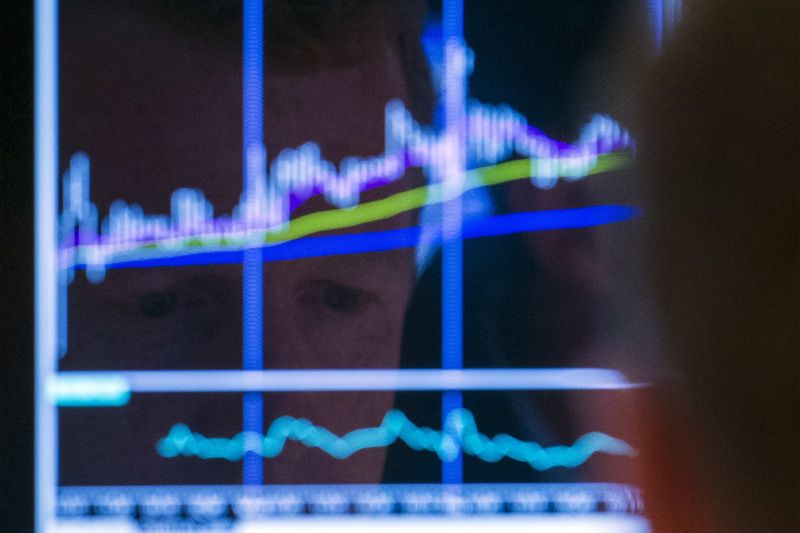Inflation Slows as U.S. Stocks Rebound
July 29 (Reuters) – On Friday, the U.S. stock market experienced a rebound as inflation numbers came in below expectations. The Federal Reserve’s core personal consumption expenditures (PCE) inflation indicator dropped to a two-year low, easing concerns about the Bank of Japan’s policy adjustments and boosting market risk appetite.
Data showed that the U.S. PCE price index rose by 0.2% month-on-month in June, aligning with market forecasts. The year-on-year increase was 3%, the lowest level since April 2021, also meeting expectations. The core PCE price index, which excludes volatile food and energy prices, rose by 0.2% month-on-month and 4.1% year-on-year. This marked a slowdown of 0.5 percentage points from May, the lowest annual rate since September 2021, and lower than the market’s previous expectation of 4.2%.
The deceleration in major inflation indicators has boosted optimism about the economic outlook among Americans. As a result, the three major U.S. stock indexes opened higher, signaling renewed confidence in the resilience of the U.S. economy.
Gina Bolvin, president of Bolvin Asset Management, cited a week of positive economic data as the main catalysts for the market’s new highs. Bolvin highlighted the falling inflation, stable economy, and better-than-expected corporate performance as reasons for the continued rise in U.S. stocks.
CIBC Chief Investment Officer David Donabedian also expressed confidence in the current macroeconomic environment, stating that investors believe the Fed has the ability to curb inflation without causing a recession. He noted that recent weeks have brought three major pieces of good news: falling inflation, a stable economy, and strong corporate performance, all of which contribute to the upward trajectory of U.S. stocks.
The Dow Jones Industrial Average closed up 176.57 points, or 0.50%, at 35,459.29 on Friday. The Nasdaq gained 266.55 points, or 1.90%, to reach 14,316.66, while the S&P 500 rose by 44.82 points, or 0.99%, to close at 4,582.23. For the week, the Dow rose by 0.66%, the S&P 500 rose by 1.01%, and the Nasdaq rose by 2.02%.
Most sectors of the S&P 500 closed higher, with the telecom services sector leading the gains at 2.3%. The consumer discretionary sector rose 1.85%, the information technology sector rose 1.48%, and the consumer staples sector rose 0.99%. Real estate and utilities, however, saw slight declines.
The majority of popular technology stocks saw gains, with notable increases of over 6% for Intel and over 4% for Meta and Tesla. Amazon rose by over 3%, while Google and Microsoft saw increases of over 2%. Other sectors, such as automobile manufacturing and semiconductors, also performed well.
Chinese concept stocks were also on the rise, as the Nasdaq China Golden Dragon Index increased by 6.97%. The rise in popular Chinese stocks further contributed to the positive sentiment in the market.
In company news, Goldman Sachs saw executive Julian Salisbury resign following recent shakeups and restructuring in its asset management business. Salisbury, the chief investment officer at Goldman Sachs Asset and Wealth Management, will be joining Sixth Street Partners as co-chief investment officer. This departure adds to the challenges faced by Goldman Sachs’ leadership and raises questions about the firm’s direction.
Meanwhile, Microsoft’s annual report highlighted concerns about potential service interruptions if there’s a shortage of AI chips in its data centers. The tech giant emphasized the importance of graphics processing units (GPUs) for its cloud computing business and expressed the need for a stable supply chain to meet consumer demands.
Additionally, the Biden administration proposed stricter fuel efficiency standards for automakers in order to accelerate the transition to cleaner or zero-emission vehicles. The proposal, released by the National Highway Traffic Safety Administration (NHTSA), aims to achieve an average fuel efficiency of 58 miles per gallon by 2032, with annual increases starting in 2027.
Overall, the positive inflation data and market performance have provided a boost to investor confidence, indicating a continued upward trend in U.S. stocks.
